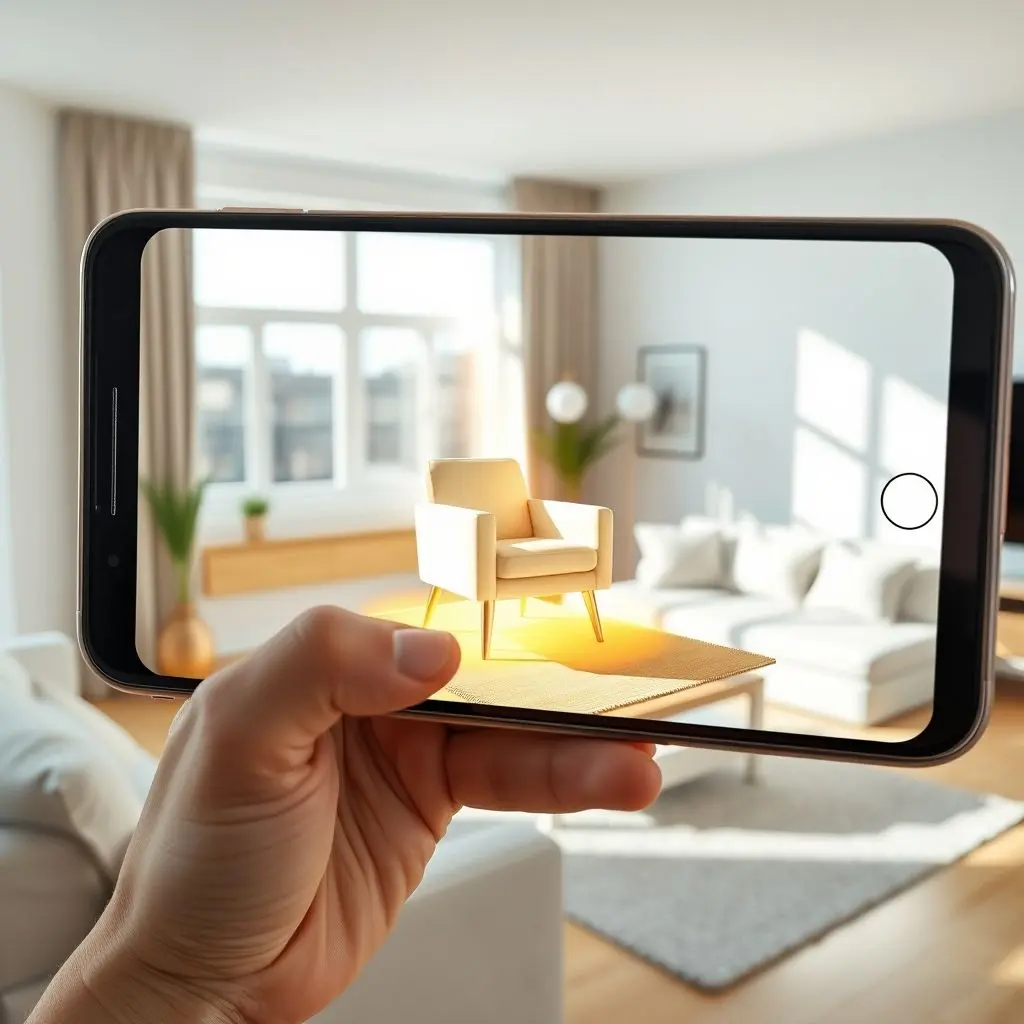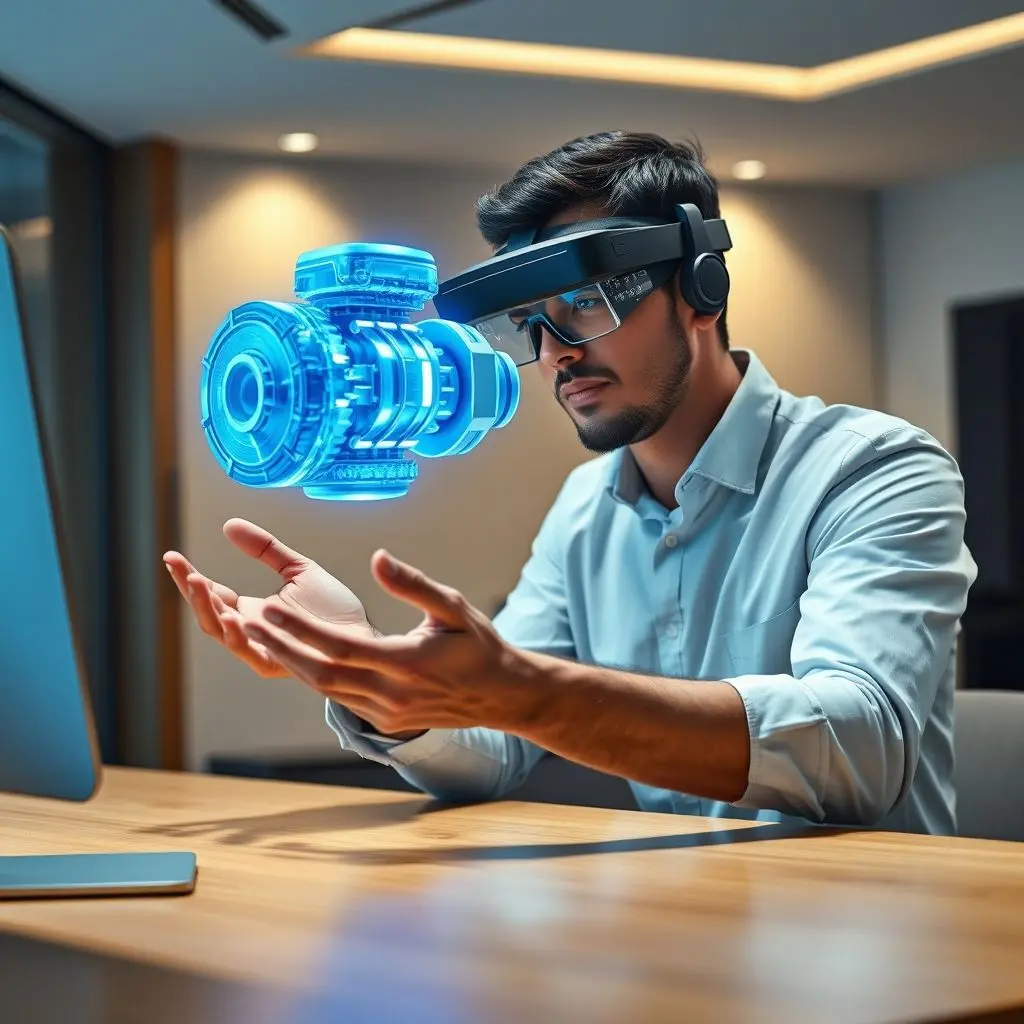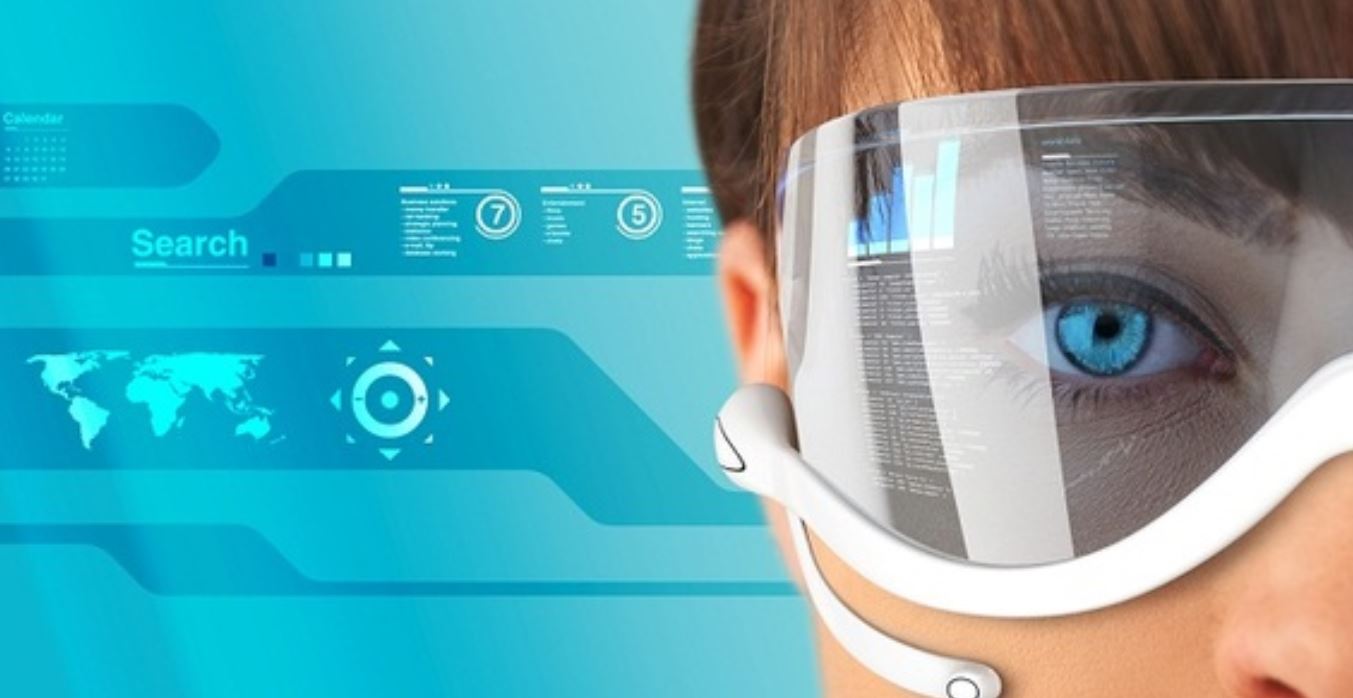Feeling like you’re drowning in an alphabet soup of ‘R’s? AR, VR, MR… it’s enough to make your head spin! You’ve probably heard these terms buzzing around, promising to reshape how we interact with the digital and physical worlds. But what really sets them apart? It’s not just a jumble of letters; each represents a unique way of experiencing reality, or a version of it. Augmented Reality (AR) likes to add a little digital spice to your current view. Virtual Reality (VR) prefers to replace your surroundings entirely. And Mixed Reality (MR)? Well, MR is the ambitious one, aiming to blend and allow digital elements to interact with both your real and virtual perceptions. If that sounds a bit like a tech riddle, you’re in the right place. Let’s demystify these concepts and explore the fascinating landscape of immersive technologies.
Before we dive headfirst into the nitty-gritty, how about a super-quick visual debrief? Our latest YouTube Short breaks down AR, VR, and MR in under 60 seconds. It’s a fantastic primer – think of it as a digital espresso shot to kickstart your understanding! Go on, give it a ‘virtual high-five’ by tapping play.
Table of Contents
Augmented Reality (AR): Enhancing Your Everyday World
Augmented Reality, or AR, is all about overlaying digital information or virtual objects onto your real-world view. Think of it as adding a digital layer to the reality you already see. You’re still present in your physical environment, but it’s enhanced with computer-generated perceptual information. This isn’t just visual; AR can potentially engage various sensory modalities, including auditory, haptic, and more.

How Does AR Work?
AR primarily functions through devices like smartphones, tablets, and increasingly, specialized AR glasses (like Google Glass or Ray-Ban Stories). These devices use cameras and sensors to interpret the physical world. AR systems then employ different recognition techniques:
- Marker-Based AR: Uses specific visual cues or markers (like QR codes or predefined images) to trigger the display of digital content. When the camera recognizes a marker, it overlays the virtual information.
- Markerless AR: More advanced, this type doesn’t rely on specific markers. It uses algorithms like SLAM (Simultaneous Localization and Mapping), GPS data, and accelerometer/gyroscope information to understand the environment and place digital objects accurately. Examples include placing virtual furniture in your room or seeing navigation arrows on a real street.
AR in Action: Popular Examples
- Gaming: Pokémon GO famously brought AR to the masses, having players find virtual creatures in their real surroundings.
- Retail: Apps like IKEA Place let you see how furniture would look in your home before buying. Virtual try-on for clothes, makeup, or sunglasses is also common.
- Navigation: Google Maps Live View overlays walking directions onto your camera’s view of the street.
- Social Media: Snapchat and Instagram filters that add dog ears or virtual makeup are prime examples of AR.
Pros and Cons of AR
Pros:
- Accessibility: Widely available through billions of smartphones.
- Real-World Context: Information is relevant to your immediate surroundings and tasks.
- Practical Applications: Enhances learning, productivity, and decision-making.
Cons:
- Limited Immersion: You’re still aware of the real world, so it’s not a fully immersive experience.
- Device Dependency: Often requires holding up a phone or wearing specific glasses.
- Potential for Distraction: Can divert attention from real-world tasks if not used appropriately.
Virtual Reality (VR): Stepping into Entirely New Dimensions
Virtual Reality, or VR, takes a giant leap further by aiming to completely replace your real-world environment with a simulated one. When you put on a VR headset, you are transported to a different, digital universe. Goodbye real world, hello entirely computer-generated simulation! This creates a powerful sense of presence and immersion.

How Does VR Work?
VR relies on specialized hardware, primarily:
- VR Headsets: Devices like the Meta Quest series, HTC Vive, PlayStation VR, or Valve Index. These headsets block out your view of the real world and display stereoscopic 3D images (a slightly different image for each eye) to create depth perception.
- Sensors and Tracking: Headsets and controllers are equipped with sensors (like accelerometers, gyroscopes, and external cameras or base stations) to track your head and body movements. This allows you to look around and move within the virtual environment. Degrees of Freedom (DoF) are crucial here – 3DoF (tracking rotational head movements) offers a more static experience, while 6DoF (tracking rotational and translational movements – up/down, left/right, forward/backward) provides much greater immersion and freedom.
- Input Devices: Handheld controllers, haptic feedback gloves, or even treadmills allow users to interact with the virtual world.
VR in Action: Popular Examples
- Gaming & Entertainment: Titles like Beat Saber, Half-Life: Alyx, and various immersive cinematic experiences.
- Training & Simulation: Used for high-stakes job training where real-world practice is dangerous or expensive, such as surgical procedures, flight simulation, or emergency response.
- Virtual Tours: Explore museums, real estate properties, or tourist destinations from anywhere in the world.
- Therapy: Used in exposure therapy for phobias, PTSD treatment, and pain management.
Pros and Cons of VR
Pros:
- High Immersion: Creates a strong sense of presence in the virtual environment.
- Realistic Simulations: Excellent for training and experiencing otherwise inaccessible scenarios.
- Nov Libations: Opens up new forms of entertainment, art, and social interaction.
Cons:
- Hardware Cost: Quality VR setups can be expensive.
- Motion Sickness: Some users experience discomfort or nausea (cybersickness).
- Isolation: Users are cut off from their real-world surroundings, which can be a safety concern or feel isolating.
- Space Requirements: Room-scale VR needs a dedicated physical space to move around.
Mixed Reality (MR): Where Digital and Physical Worlds Truly Mingle
Mixed Reality, or MR, is perhaps the most ambitious of the three. It seeks to merge the real and virtual worlds to produce new environments and visualizations where physical and digital objects co-exist and interact in real-time. This is the cool blend where digital elements aren’t just overlaid; they can be anchored to, and interact with, your actual surroundings. Imagine a virtual character not just floating in your room, but actually sitting on your real chair and reacting if you try to touch it.

MR exists on a spectrum, often visualized by Milgram’s Reality-Virtuality Continuum, which ranges from the completely real environment to the completely virtual environment. AR is closer to the real end, VR is at the virtual end, and MR spans the space in between.
How Does MR Work?
MR systems are more complex and require advanced hardware capable of understanding and mapping the physical environment in detail. Key components include:
- MR Headsets: Devices like Microsoft HoloLens or Magic Leap. These are typically see-through displays that allow users to view their real surroundings while projecting holograms into them.
- Sophisticated Sensors: Multiple cameras, depth sensors (like LiDAR), and environmental mapping capabilities to create a detailed 3D map of the user’s space.
- Spatial Anchoring and Occlusion: Virtual objects can be anchored to specific points in the real world and can even be occluded by (disappear behind) real objects, enhancing realism.
- Advanced Interaction: Often uses hand tracking, gesture recognition, eye tracking, and voice commands for natural interaction with digital elements.
MR in Action: Emerging Examples
- Design and Engineering: Collaborative 3D modeling where engineers can see and manipulate virtual prototypes in a real-world context.
- Remote Assistance: An expert can remotely guide a technician by drawing annotations or displaying information that appears directly on the technician’s view of the equipment.
- Advanced Medical Procedures: Surgeons can overlay patient scans (like CT or MRI) onto the patient’s body during surgery for enhanced precision.
- Education and Training: Complex interactive lessons where students can manipulate and explore 3D virtual models within their classroom.
Pros and Cons of MR
Pros:
- Blends Best of Both Worlds: Combines the awareness of AR with the interactivity potential closer to VR.
- Interactive Digital Objects: Virtual elements are not just passive overlays; they are responsive to the real world.
- Strong Professional Potential: Huge promise for complex industrial, medical, and design applications.
Cons:
- High Complexity and Cost: Hardware is currently very expensive and bulky.
- Emerging Technology: Still in earlier stages of development compared to AR and VR.
- Fewer Consumer Applications: Primarily focused on enterprise and professional use cases for now.
- Field of View Limitations: Current MR headsets often have a more limited field of view for holographic content.
AR vs VR vs MR: The Core Distinctions Unpacked
So, to recap the fundamental differences in a nutshell: AR adds, VR replaces, and MR mixes and interacts. But let’s break it down further with a comparative look:

| Feature | Augmented Reality (AR) | Virtual Reality (VR) | Mixed Reality (MR) |
|---|---|---|---|
| Immersion Level | Partial – user is aware of and interacting with the real world. | Total – user is fully immersed in a simulated world, isolated from the real world. | Variable – blends real and virtual; digital objects can interact with the real world. |
| Perception of World | Real world enhanced with digital overlays. | Completely computer-generated environment. | Real world intertwined with interactive, spatially aware digital objects (holograms). |
| Primary Hardware | Smartphones, tablets, AR glasses (e.g., Google Glass, Ray-Ban Stories). | VR headsets (e.g., Meta Quest, HTC Vive, PSVR) that block out external view. | MR headsets (e.g., Microsoft HoloLens, Magic Leap) with see-through displays and advanced environmental sensors. |
| Interaction Model | User interacts with digital overlays, often via touchscreens or simple gestures. | User interacts fully within the virtual environment using controllers, hand tracking. | User interacts with digital objects that are aware of and can react to the real environment, using gestures, voice, eye-tracking. |
| User’s View | Sees the real world with digital elements added. | Sees only the virtual world. | Sees the real world with integrated digital elements that can interact with it. |
Real-World Applications: Beyond the Hype, Where Are These Technologies Shining?
These immersive technologies are moving beyond novelty and finding practical applications across numerous industries:
Augmented Reality Applications:
- Retail & E-commerce: Virtual try-ons for clothing, makeup, and accessories; previewing furniture in home environments.
- Navigation & Travel: Overlaying directions and points of interest in real-time (e.g., Google Maps AR).
- Education & Training: Interactive 3D models for learning anatomy, history, or complex machinery.
- Manufacturing & Maintenance: Displaying instructions, schematics, or diagnostic information directly onto machinery for technicians.
- Marketing: Interactive print ads, product packaging that comes to life.
Virtual Reality Applications:
- Gaming & Entertainment: Deeply immersive games, virtual concerts, and cinematic experiences.
- Training & Simulation: Realistic training for pilots, surgeons, soldiers, and hazardous material handlers without real-world risks.
- Healthcare: Pain management, physical rehabilitation, therapy for PTSD and phobias, surgical planning.
- Architecture & Real Estate: Virtual walkthroughs of buildings before they are constructed or for remote clients.
- Virtual Tourism: Experiencing distant locations and cultures.
Mixed Reality Applications:
- Design & Engineering: Collaborative 3D modeling, visualizing complex data, and reviewing designs in a shared physical/virtual space.
- Remote Assistance & Expertise: Field technicians receiving guidance from remote experts who can see what the technician sees and overlay instructions.
- Advanced Medical Procedures: Surgeons using holographic overlays of patient data during operations.
- Education & Corporate Training: Creating highly interactive and contextual learning experiences, such as disassembling a virtual engine on a real workbench.
- Construction and Architecture: On-site visualization of BIM (Building Information Modeling) data, comparing plans to as-built reality.
The Evolving Landscape: Blurring Lines and XR – The Future is Extended
The distinctions between AR, VR, and MR aren’t always black and white, and the lines are continually blurring. We’re seeing VR headsets incorporate “passthrough” cameras that allow for AR-like experiences, and AR glasses are striving for greater immersion. This convergence is leading to the broader term Extended Reality (XR), which encompasses all realities along the virtuality continuum – AR, VR, and MR.
The future of these technologies points towards:
- Lighter, More Powerful Hardware: Smaller, more comfortable, and more capable headsets and glasses.
- Improved Displays: Higher resolution, wider field of view, and better realism.
- AI Integration: Smarter environmental understanding, more natural interactions, and personalized experiences.
- 5G and Edge Computing: Enabling more complex experiences with lower latency by offloading processing to the cloud.
- The Metaverse: While still a developing concept, XR technologies are foundational to building persistent, shared virtual and mixed reality spaces.
Disclaimer: The field of immersive technologies is rapidly evolving. While the core concepts remain, specific capabilities and device availability change quickly.
Which ‘R’ is Right for You (Or Your Business)?
Choosing the right technology depends heavily on your specific needs and goals:
- If you want to enhance your current reality with contextual information or simple digital interactions, and accessibility via smartphones is key, AR is likely your best starting point.
- If you need complete immersion for training, simulation, gaming, or experiencing entirely different worlds, VR is the technology of choice.
- If your goal involves complex interactions where digital objects need to be spatially aware and integrate deeply with the real environment, particularly for professional or industrial applications, MR offers the most advanced capabilities (though often with higher costs and complexity).
Conclusion: The Reality of Tomorrow is Immersive
AR, VR, and MR are more than just futuristic fantasies; they are increasingly tangible technologies shaping how we learn, work, play, and connect. While AR layers the digital onto our world, VR transports us to new ones, and MR masterfully blends the two, allowing them to interact. Understanding their unique strengths and applications is key to harnessing their transformative potential. As these technologies mature and converge, the way we perceive and interact with information and each other is set for a profound evolution. The digital fog is clearing, revealing a future that is undoubtedly more immersive.
Frequently Asked Questions (FAQs)
- Q1: What’s the simplest way to remember AR vs VR vs MR?
- A: Think of it this way: AR augments your existing world by adding to it. VR replaces your world by transporting you to a completely different one. MR mixes your world by allowing digital and real elements to interact with each other.
- Q2: Can AR and VR be used together?
- A: While they are distinct technologies, the lines are blurring. Some newer VR headsets feature “passthrough” capabilities, allowing users to see their real surroundings with digital overlays, creating an AR-like experience. The umbrella term for all these technologies is Extended Reality (XR).
- Q3: Which technology is generally more expensive?
- A: Basic AR is highly accessible as it can run on most modern smartphones. Dedicated VR headsets represent a moderate investment. Advanced MR headsets, like Microsoft’s HoloLens, are currently the most expensive and are primarily targeted at enterprise and professional users.
- Q4: Is MR just a more advanced version of AR?
- A: Not precisely. While both involve overlaying digital information onto the real world, MR’s crucial differentiator is the ability of virtual objects to be spatially aware and interact with the real environment in a sophisticated way. This means digital objects can understand and react to real-world surfaces and objects, which is a significant step beyond typical AR capabilities.
- Q5: What are some common challenges for these technologies?
- A: Common challenges include hardware limitations (such as battery life, processing power, field of view in headsets), the complexity and cost of content creation, user adoption hurdles (cost for consumers, comfort and ergonomics of wearables, social acceptance), and important ethical considerations (data privacy, digital addiction, potential for misinformation).

